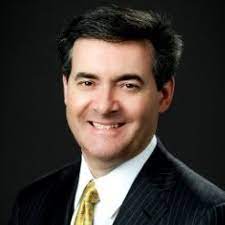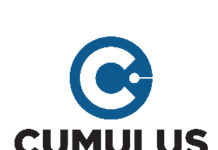
After months of the radio industry beginning a conversation about keeping AM radio in automobiles, this past weekend marked the start of a mainstream breakthrough. A Washington Post feature ran on Saturday, May 13, that jump-started nationwide conversations on The Hill, CNN, and more. As AM’s fight becomes public, Radio Ink talks one-on-one with Cumulus Media and Westwood One Chief Insights Officer Pierre Bouvard about the roads not yet taken in preserving radio’s place and where that path goes from here.
Radio Ink: Let’s start with how interesting that Washington Post piece was. They titled it “The End of a Love Affair.” It really keyed in on that emotional connection people have to AM, almost in the same way romantic way that vinyl has had a resurgence. In the industry, we’ve had kind of just the two main plot points. It’s a safety issue, or it gets a demographic issue. What chance does radio have of making this an emotional issue in your eyes?
Pierre Bouvard: Well, I think we have to be careful. We have an enormous media platform in AM/FM radio, right? In a month, nine out of 10 Americans are reached by AM/FM radio. So, if you run a good advertising campaign on radio, you’ll get a lot of results.
If you interviewed a couple of thousand Americans right now and ask them, are you aware that automakers might eliminate you know, AM radio from the car, my suspicion, despite the Washington Post, is that a tiny percentage of Americans are going to become aware of this. It takes a long time for stuff to seep into the general consciousness. Should we get on our airwaves and start relentlessly promoting that automakers are going to take AM radio away? This suddenly communicates a negative message to many, many advertisers, who maybe have no idea that AM radio might go away.
So, is this something that we want to popularize and create mass awareness among our advertisers by getting on the radio and promoting this and trying to appeal to people? I think the smart decision is no. This is something that you sit down with the chipmakers who create the chips for the radios and you sit down with the manufacturers. The issue is that electric cars cause AM interference and that if each automaker has to devote engineering time and resources to fixing this problem, they could be spending that engineering resource on many, many other things. This is the last thing they need to worry about.
The NAB is the center of excellence in technology. It has access to the smartest broadcast engineers in the land who know everything there is about noise suppression. What if the radio industry partners with automakers on creating a noise-canceling solution and then license that for free? That, I think, is a more productive kind of collaborative approach to get to the root cause issue of this electric interference.
Radio Ink: So is logic-based argument the only way forward? Radio’s been fighting from the head, but then the Washington Post throws a curve ball and shows there has to be at least some value to hitting from the heart. If I say, “Radio provides EAS,” Ford could easily say, “Oh, just get that on your phone now.” If I say, “My granddad and I listened to Vin Scully called Dodger games on AM and I prefer AM to remember him,” could there be value in playing on that?
Pierre Bouvard: There already is that connection. We looked at AM listening and 57 percent goes to news and talk stations. So information and local sports, local weather. You read in the Washington Post piece, they said radio is the last resort when the Internet goes down and the TV stations are off the air in a crisis. Radio is the only solution, I think. Absolutely, I think there is going to be lobbying going on from that perspective.
I think you have thousands of religious broadcasters who are on AM who are going to tell their congregations to write their congressmen. I think there are Chinese and Filipino and all manner of foreign language broadcasters who this is their only avenue to get to their constituency. So I think there are a lot of interest groups here that are going to awaken and talk to their congressperson.
How worried are you about new tech like the Google Dashboard and the idea of automakers adding increasing subscription-based services in the car that could pull from radio?
Pierre Bouvard: One of the things that researchers have found is that consumers have little awareness and understanding of all the features in their entertainment systems and use very little of them. We’re 20 years into the new world of infotainment systems in the car and AM/FM is still an 88 share of ad-supported audio time spent in the car. An 88 share, according to Edison’s Share of Ear. And What was it six years ago? 88. Why? Radio is simple.
You know what to expect. It’s not complicated. It’s live. It entertains you, picks you up, and makes you feel good. It’s been surprisingly difficult for automakers to create technology in the car that’s simple and easy for the consumer.
But yes, the interest groups that are affected need to stand up and be counted and talk to their congressmen. The technology experts need to partner with the chip makers and the auto manufacturers to find a solution to noise abatement. There’s a solution here. We put a man on the moon. We can figure out a way to make AM radio pleasant in an EV.







Go all digital on the AM band and have the gov’t subsidize the operators…If not, then have the government buy back the frequencies from the operators…